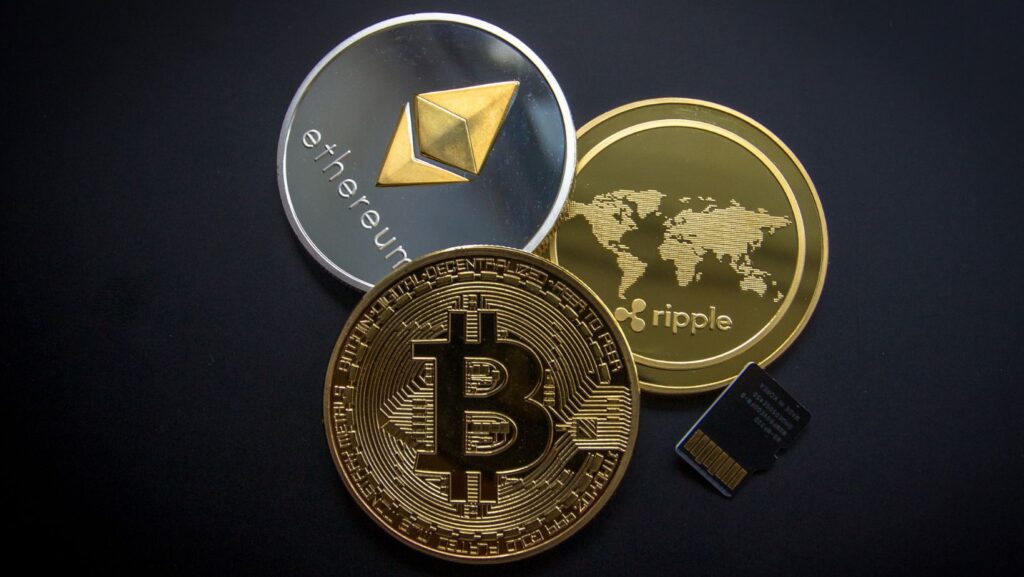Is it ever a wonder why some adults seem to make their money grow like magic beans? They might talk about “stocks” and “banks,” but there’s a new buzzword spreading fast: Decentralised Finance, or DeFi for short. It may sound complicated but don’t worry. This guide will help you unlock the fun (and sometimes confusing) world of DeFi!
What Is DeFi? Imagine a Piggy Bank on the Blockchain
Think about your piggy bank. You stash away your allowance or birthday money in it, and over time, it grows. Traditional banks work similarly; they hold your money, lend it to others, and pay interest in return. However, banks are controlled by central authorities, which means they decide how things operate.
In contrast, DeFi functions like a digital piggy bank that everyone shares, with no central boss. Instead of banks managing money, cryptocurrencies like Bitcoin and Ethereum operate on a blockchain network. Transactions on the blockchain are recorded openly and securely, so there’s no need for long bank queues or complex paperwork. Everything can be done through your phone or computer, putting control directly in your hands.
Crypto Cocktails and Tokenomics: Understanding DeFi Jargon
Before diving deeper into DeFi, it’s helpful to decode some of the most common terms you’ll encounter:
- Token: A digital asset with value, similar to a casino chip. Tokens can represent anything from company shares to rare digital art ownership.
- Blockchain: Think of it as a digital ledger, where every transaction is recorded in an unchangeable way. Everyone can view the history, which keeps the system transparent and secure.
- Mining involves solving complex puzzles to earn new tokens, similar to a treasure hunt that rewards participants for their effort.
- Decentralization: There’s no central authority calling the shots; everyone in the system has equal power, just like in a fair online game where no player holds an unfair advantage.

These concepts might seem overwhelming at first, but they form the backbone of the DeFi world. Once you get the hang of them, you’ll start seeing how exciting this new financial landscape can be.
DeFi Delights: What You Can Do with the Magic of DeFi
The possibilities in DeFi are endless, as it removes many of the barriers that traditional finance imposes. Here are some exciting things you can explore:
- Borrowing and Lending: DeFi lets you borrow money or take out loans without involving a bank. The system directly connects lenders with borrowers, often providing better interest rates. You no longer have to jump through hoops or rely on a central institution to approve your loan application.
- Trading Tokens: Just as people trade collectible cards, you can buy, sell, and swap various cryptocurrencies on decentralized exchanges. These platforms allow you to trade assets without an intermediary, opening up a new world of financial opportunities.
- Earning Interest with Yield Farming: Some DeFi platforms offer a chance to earn rewards through yield farming. You can lock your tokens in liquidity pools and receive interest or additional tokens as a return. It’s a bit like earning rent from your digital assets!
DeFi gives users more control and flexibility, allowing them to manage their money on their terms. Whether you’re interested in loans, trading, or earning passive income, there’s something for everyone.
DeFi Dangers: Navigating the Risks
As exciting as DeFi sounds, it’s essential to understand that it comes with risks. Like any new frontier, the DeFi world has its share of challenges. Here are some essential things to keep in mind:
Volatility
Cryptocurrencies are known for their unpredictable price changes. Your tokens might rise significantly one day and lose half their worth the next.
Scams and Fraud
DeFi can attract scammers who promise unrealistic returns.

Be cautious of schemes that sound too good, and avoid sharing your private information.
Smart Contract Risks
Many DeFi platforms rely on smart contracts, which are self-executing agreements written into code. A contract with a bug or security flaw could lead to financial losses.
Lack of Regulation
Traditional financial institutions are heavily regulated to protect consumers, but DeFi operates more unregulated. This means there’s limited recourse if something goes wrong.
To protect yourself, it’s crucial to do your research. Not all DeFi projects are legitimate or reliable. Only invest what you can afford to lose, and never invest your savings into risky ventures.
DeFi Discovery: Learning the Ropes Safely
If you’re intrigued by DeFi but worried about the risks, there are ways to explore the space safely. Many platforms offer demo modes or play-money options, allowing you to practice without using real funds. This is a great way to learn how DeFi works before committing money.
Additionally, some user-friendly platforms like https://blog.vave.com/ provide safe spaces to experience DeFi without overwhelming complexity. These platforms offer educational tools to help you understand the basics, making it easier for beginners to get started.
The Future of DeFi: A Financial Revolution
DeFi is more than just a passing trend; it’s reshaping the financial world. DeFi platforms are becoming more advanced. Defi offers features that traditional finance struggles to match as blockchain technology evolves. The ability to access financial services without geographical barriers creates an inclusive economy.
At the same time, traditional banks and financial institutions are taking notice. Some are beginning to integrate blockchain technology into their systems to stay competitive. This blending of old and new financial systems will likely lead to even more innovation in the future.
